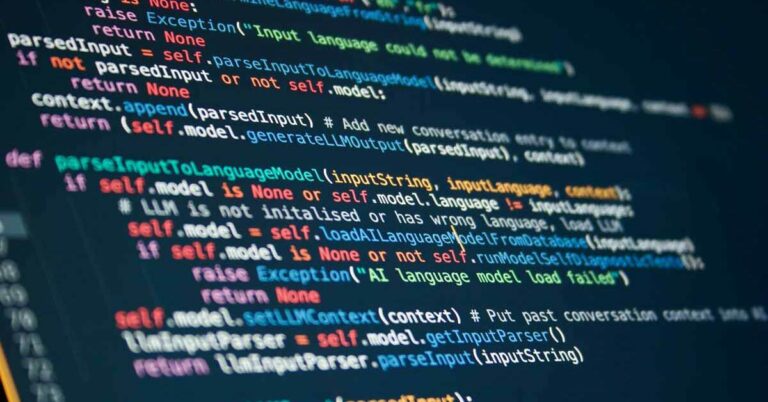
Only 21% of industry professionals report having no issues with their supply chain visibility. The rest of the players in the market need to find solutions to improve visibility and their resulting agility to rapidly shift sourcing, manufacturing, and distribution activities as needed.
AI-powered solutions help organizations gain real-time visibility into every step of their supply chain, leading to more efficient and cost-effective operations.
Things to know about using AI to enhance supply chain visibility:
- Common Supply Chain Challenges
- Why Should Your Business Use AI to Enhance Supply Chain Visibility?
- 7 Ways to Enhance Supply Chain Visibility with AI
Common Supply Chain Challenges
With the rapid evolution of technology, the rapid pace of business, fluctuations in consumer preferences, decreased delivery time expectations, and political and economic instability, companies today face an ever-increasing volume of demand and supply variability.
Fluctuations in demand and unpredictable variations in supply can lead to imbalanced inventory levels, stockouts, or excess inventory. Managing these variations effectively requires accurate demand forecasting, agile production planning, and robust inventory management systems.
Global supply chains have also become more intricate, as organizations face the challenges that come with navigating complex networks of suppliers, distributors, and logistics partners across different countries. This complexity is amplified by additional risks, including geopolitical uncertainties, regulatory compliance, and cultural differences.
All of these supply chain challenges can significantly impact the efficiency, cost, and reliability of the overall process.
Why Should Your Business Use AI to Enhance Supply Chain Visibility?
Organizations can overcome common challenges by leveraging the power of artificial intelligence to transform their supply chain and enhance efficiency, accuracy, and decision-making capabilities in the process.
Your company can use AI to gain real-time visibility into the entire supply chain, from raw materials to finished products. This can help your organization identify bottlenecks, track inventory, and optimize delivery routes, leading to more efficient and cost-effective operations.
7 Ways to Enhance Supply Chain Visibility with AI
Some powerful ways to use AI to enhance supply chain visibility are:
- Identify the data sources
- Use advanced analytics
- Implement real-time tracking
- Use predictive maintenance
- Collaborate with partners
- Use AI-powered tools
- Use blockchain technology
Identify the data sources
Traditional supply chains generate massive volumes of data, ranging from inventory levels to logistics information to customer feedback. The first step in enhancing supply chain visibility with AI is to identify the data sources across the supply chain. This could include data from sensors, barcodes, RFID tags, GPS, and other sources.
When organizations integrate data from this variety of sources and use AI to derive insights, they can gain a more comprehensive understanding of their supply chain.
Use advanced analytics
AI-powered advanced analytics, such as machine learning and predictive analytics, can help your organization analyze the data from the identified sources to gain insights into the supply chain, identify patterns, and predict future trends.
The real-time insights you derive can enable your organization to optimize inventory management and supply chain operations, address bottlenecks, minimize delivery delays, and improve overall operational efficiency.
Implement real-time tracking
Real-time tracking and monitoring of shipments is vital to achieving end-to-end supply chain visibility. By tracking products every step of the way, from the point of origin to the end consumer, you can identify bottlenecks in your processes, shipping delays, and other issues that could impact the supply chain.
By achieving this level of transparency and traceability, you enable proactive and informed decision-making by your organization’s leaders.
Use predictive maintenance
Organizations lose millions of dollars every year from equipment failure and the resulting unplanned downtime. Predictive maintenance leverages data science, AI, machine learning, and advanced analytics to proactively identify issues with equipment.
For example, if your organization uses infrared thermography to monitor heat signatures in equipment and detect excessive heat from machines that are under extreme stress or malfunctioning, you can identify potential equipment failures before they occur and alert relevant technicians.
By using AI technologies to identify potential equipment failures before they occur, you increase your supply chain visibility, reduce downtime, reduce lost revenue, improve customer satisfaction, and ultimately ensure that the supply chain operates smoothly.
Collaborate with partners
Supply chain visibility is far from limited to your individual organization; instead, it extends across your entire network of suppliers, logistics providers, and other partners.
AI-powered collaboration tools enable real-time information sharing and seamless communication among key stakeholders. This improves supply chain visibility, agility, and coordination.
Use AI-powered tools
AI-powered tools like digital twins and simulation models play a key role in improving supply chain visibility by providing both real-time monitoring and predictive capabilities.
Digital twins act as virtual replicas of your end-to-end supply chain process, including suppliers, manufacturing facilities, warehouses, transportation networks, and distribution centers. By integrating real-time data from IoT devices and other sources, you can use digital twins to gain insights into the status and condition of your products and resources at any time.
This level of visibility enables your organization to easily identify bottlenecks and disruptions and to swiftly address these issues.
AI-powered simulation models use historical and real-time data to predict future scenarios and test the impact of potential changes in the supply chain. This enables your organization to evaluate potential risks associated with different decisions and circumstances, allowing for improved risk management and informed, proactive decision-making by business leaders.
Use blockchain technology
Blockchain technology can enhance trust and traceability by creating a secure and transparent ledger of transactions across the supply chain. Blockchain enables organizations to track and verify every step of the supply chain, from raw material sourcing to distribution of the final product.
This ensures compliance and improves overall supply chain visibility.
It’s worth noting that while AI can bring significant benefits to supplier management, human expertise, and judgment are still crucial. AI should be viewed as a tool to augment human decision-making and enhance efficiency rather than replace human involvement entirely.
How AIM Consulting Can Help You Harness the Power of AI
AIM Consulting’s expertise in machine learning and predictive and prescriptive analytics has helped many organizations transform their supply chain management.
By using AI to improve supply chain visibility, we can help your organization identify and address bottlenecks in your supply chain, improve operational efficiency, and empower your business leaders to make informed decisions.
Need Help Enhancing Supply Chain Visibility with AI?
We’ll partner with you to harness the power of AI technologies and help your organization gain a competitive edge to stay ahead of the curve in today’s rapidly changing business environment.




